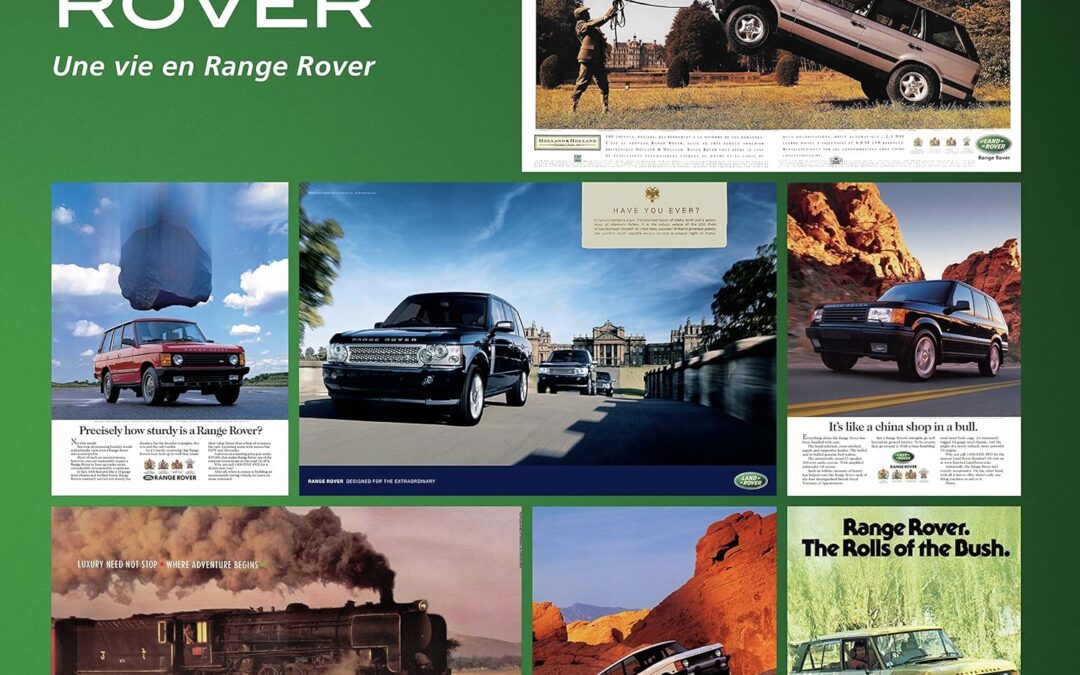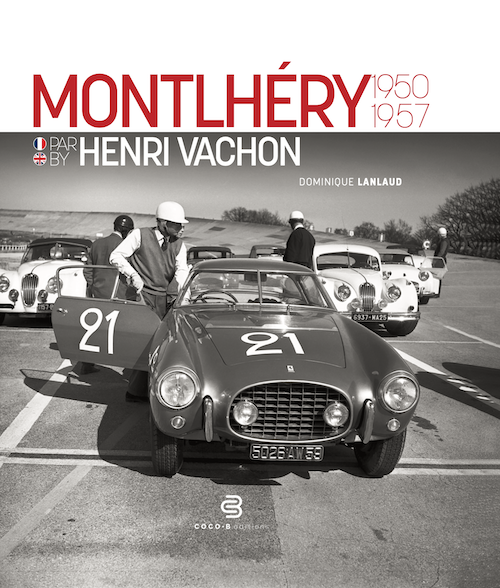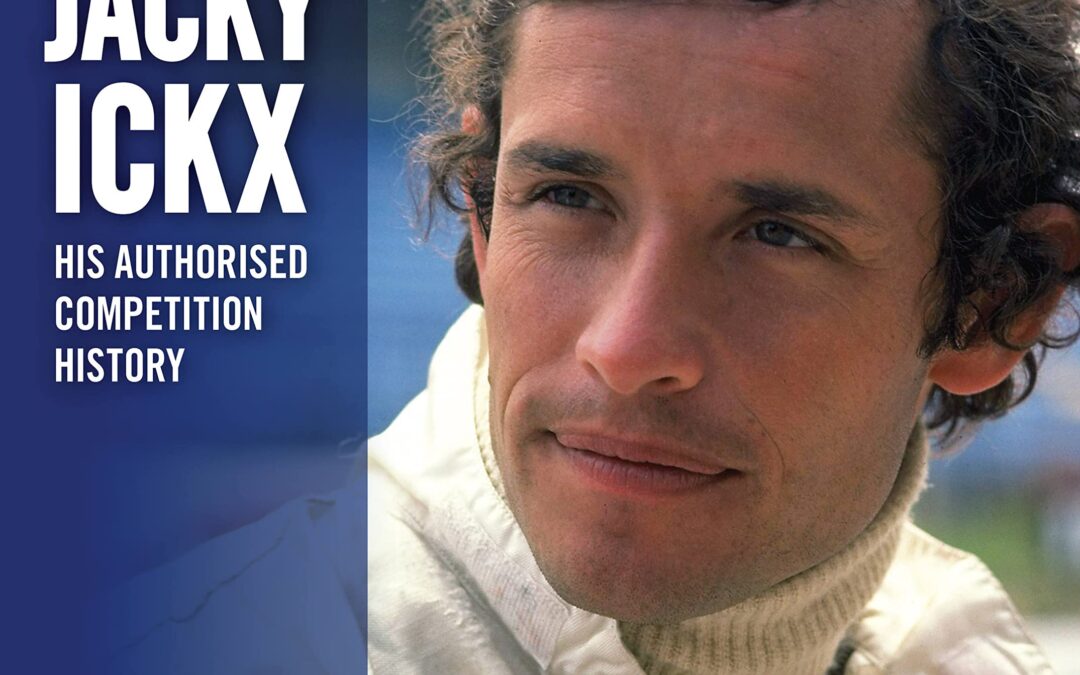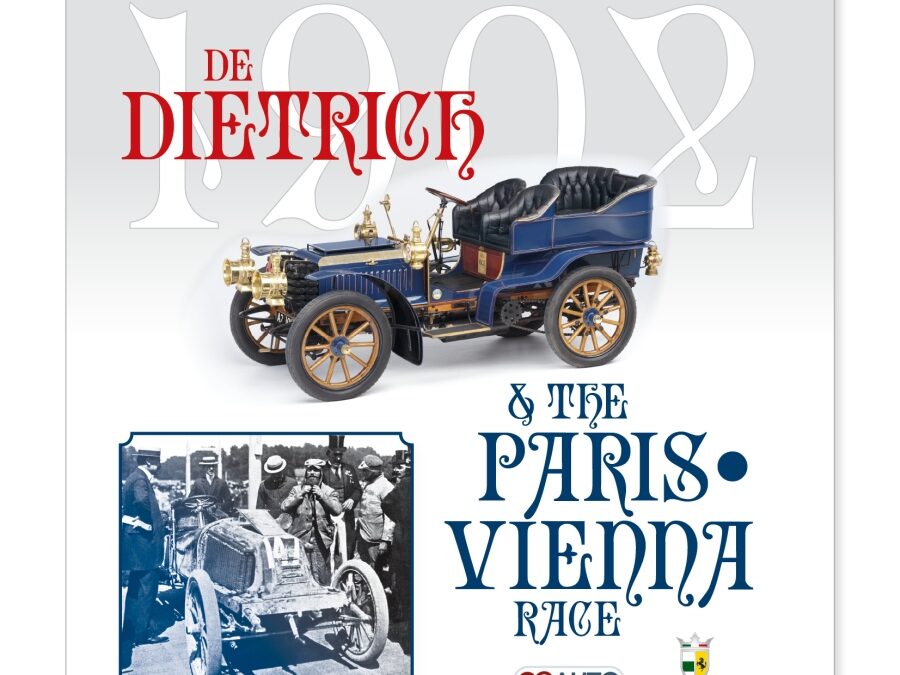
Rare & Unique Vehicles magazine, together with Metropole Druten is presenting a new book featuring a 1902 DeDietrich and the story of the 1902 Paris-Vienna race written by noted German historian, Thomas Ulrich.
It is a hardbound, 148-page colour book with 145 illustrations and infographics.
Table of Contents
- The De Dietrich Story
- The Race
- The Birth of Motorsport
- The 1901 Paris-Berlin Race
- Preparations for the 1902 Paris-Vienna Race
- Alcohol To The Rescue
- Gordon Bennett Races
- The First Gordon Bennett Cup
- The Second Gordon Bennett Cup
- Paris-Vienna Touring Trip
- Paris-Vienna Race: Start and First Stage
- Gordon Bennett Cup: First Stage
- Paris-Vienna Race: Neutralized Intermediate Stage
- Paris-Vienna Race: Second Stage – Bregenz Salzburg
- Gordon Bennett Cup: Second Stage
- Paris-Vienna Race: Stage 3: Salzburg To Vienna
- Paris-Vienna Tourist Trip: The Arrival
- Side Events and Official Results
- Personal Accounts

In 1953, Robert Straub set off for a year’s study abroad in France. Already interested in cars and their designs (he was later to become a designer for General Motors) he took hundreds of snapshots of exotic (to him) cars on the streets. By the time he returned to France a decade later, nearly all the cars he had seen previously had disappeared due to stringent post-WW II taxes. Bob Straub’s evocative photographs of these classicsDelahayes, Delages, Bugattis, Tatras, Hotchkiss’, Rosengarts, Hispano Suiza’s, to name a few, are the substance of this book along with his entertaining and informative narrative. 120 plates.

The Testarossa, one of the most “provocative” Ferraris of all time, caused a sensation from its “preview” at the Paris Lido in 1984. It boasted extreme styling, with a rear track significantly wider than the front and conspicuous air intake strakes on the flanks, while mechanically it sported a mighty V12 engine displacing almost five.
The Supercars series could hardly fail to include a title devoted to this sensational car and recounting its technical and stylistic genesis.
The book covers both the Testarossa’s “ancestors” – the 365 GTB/4 ‘Daytona’ and the 512 BB – and its “descendants” – the 512 TR and the F512 M, not to forget the Spider version commissioned by Avvocato Gianni Agnelli and the sensational Mythos, the prototype designed by Pininfarina in 1989 and based on the rolling chassis of this car. The book is completed by the road tests that featured the car in the magazine Quattroruote.

One day in early 1960, the French consulate in Detroit organised a cocktail party. Because of his knowledge of the French language, designer Henry De Ségur Lauve was invited along as an interpreter. At the party, he met Pierre Bercot, general manager of Citroën. They got talking about Citroën design and Bercot invited De Ségur Lauve for a meeting in Paris. That conversation went positively and in May 1960 De Ségur Lauve signed a cooperation agreement with Citroën to produce design proposals that suited the taste of American consumers.
From then on, De Ségur Lauve came out with a fair number of sketches with a decidedly American influence for new models. The first designs are still sometimes reminiscent of facelifted DSs, but soon they look more like spacecraft than cars for everyday use. De Ségur Lauve had access to Citroën’s design studio and could see what the designers were working on, which allowed him to create ‘Americanised’ variants based on those models. Examples found in this book include proposals for the later Citroën CX and the interior of the Citroën SM.
Much of De Ségur Lauves spectacular designs ended up in the Citroën archives and were forgotten. After more than 50 years, this book showcases his work prominently for the first time. A unique piece of Citroën history!
The texts in the book are in Dutch, French and English.
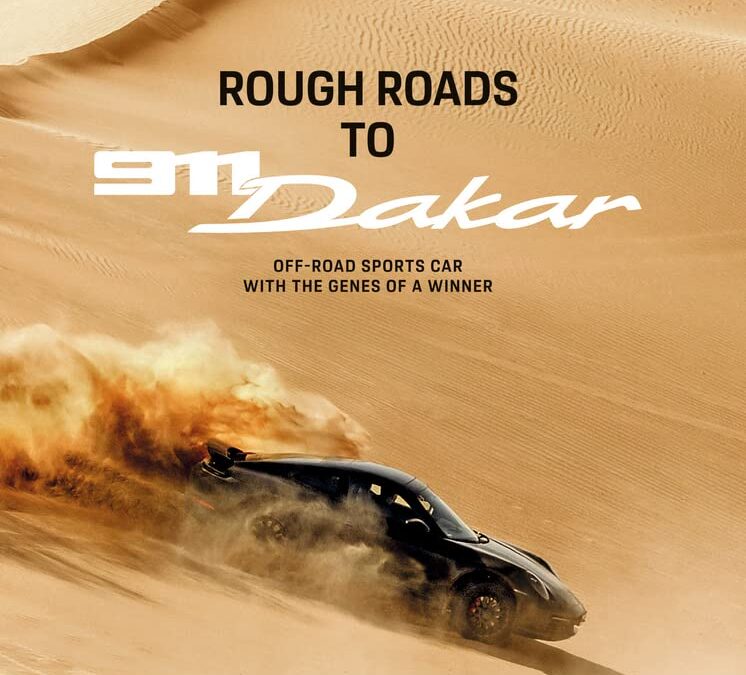
A sports car for race tracks and everyday life: This holds true since the 1984 triumph of legendary four-by-four 911 at the Paris-Dakar rally, the world’s toughest long-distance race. The now re-issued off-road Porsche manages the balancing act of road/sports car and cross-country vehicle better than any other 911 before. In eight chapters the richly illustrated car book depicts the development of the first genuine off-road 911. From the historic genes at the Porsche development center in Weissach to the extensive test drives of the sports car on various continents – a piece of living automobile history.
- Ideal gift for car lovers: High-quality illustrated book on the Porsche 911 Dakar
- Exclusive photos by Porsche photographer Christoph Bauer
- For off-road and motorsport fans: Glimpses behind the scene of vehicle development
- History of the Porsche 911 Dakar: From the first idea to the test drives
- Official Porsche book from the Christophorus edition
Impressive pictures document the development of this special 911 model, limited to 2,500 cars. Christoph Bauer, long-standing Porsche photographer, took the brilliant photos for this volume. Bauer followed the whole process of development – all the time close to the designers. Thus he was able to take spectacular Porsche photos, just for this illustrated car book. Pure Porsche design!
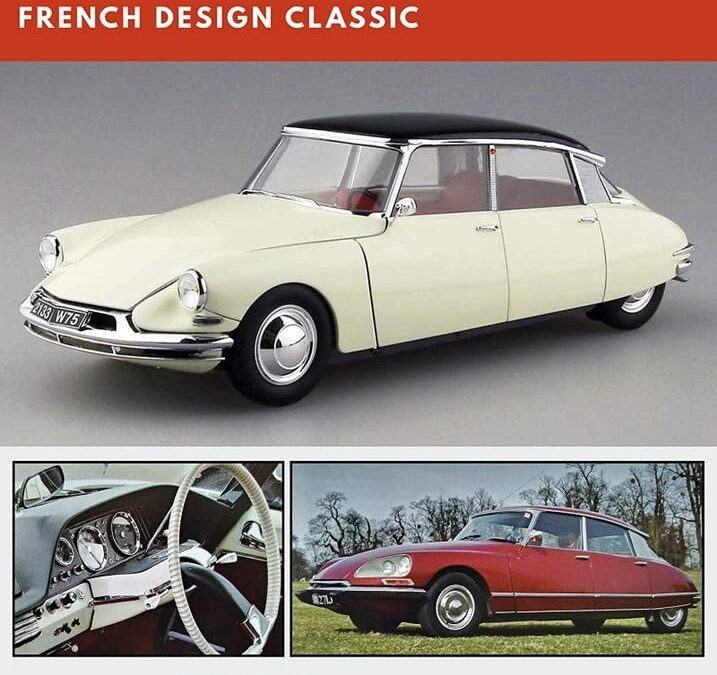
Launched in 1955 yet looking like a sci-fi design proposal for a future then undreamed of, Flaminio Bertoni’s ellipsoid sculpture with wheels that was the Citroën DS stunned the world.
There was a near riot at the 1955 Paris Motor Show launch of the car, orders flooded in for this, the new ‘big Citroën’ (a Voiture a Grande Diffusion or VGD) as the car that replaced the legendary Traction Avant range.
The term ‘DS’ stems from two Citroën parts of nomenclature – the type of engine used as the 11D, (D) and the special hemispherical design of the cylinder head as ‘Culasse Special’ (S): DS out of ‘Deesse’ or Goddess, was a more popular myth of ‘ DS’ origination, but an erroneous one.
But it was not just the car’s aerodynamically advanced body shape (Cd. 0.37) that framed the genius of the DS: hydro pneumatic self-levelling suspension, advanced plastics and synthetics for the construction of the roof and dashboard/fascia, and amazing road holding and cabin comfort were some of this car’s highlights.
Only the lack of an advanced new engine was deemed a missed opportunity. In fact Citroën had created a new engine for the car but lacked the resources to produce it in time for 1955.
DS was a major moment in the history of car design, one so advanced that it would take other auto manufacturers years to embrace. Yet DS in its ‘aero’ design was the precursor to today’s low drag cars of curved form.
Manufactured worldwide, used by presidents, leaders, diplomats, farmers and many types of people, the DS redefined Citroën, its engineering and design language, and its brand, for decades to come.
Prone to rust, not the safest car in the world, and always lacking a smoother powerplant, the DS still became an icon of car design.
Reshaped with a new nose and faired-in headlamps in 1967, DS remained in production until 1975.
Across its life DS spawned an estate car variant as the ‘Safari’, a range of limousines, two-door convertibles, and even coach-built coupes and rally specials.
This car was a product design that became an article of social science – it was that famous and it defined a European design movement upon a global stage then packed with ‘me too’ copyist designs.
The DS or ‘Goddess’ as it was tagged, was a tear-drop shaped act of French confidence in a world of the regurgitation of the known. Some argue that DS and its effect has never been surpassed.
This new value-for-money book provides innovative access to the design, history, and modeling of the revolutionary DS – one of the true ‘greats’ of motoring history and, a contemporary classic car of huge popularity.

A rare and extremely important early motor racing book by the Englishman, Charles Jarrott, who was a very successful competitor in many of the major early international racing events in Great Britain and Europe from 1895-1906. The book has many black ad white photos and illustrations and a wonderful appendix that identifies the winners of each of the early competitions from 1895-1906, (by date, vehicle and race)! This is the personal story of a man who participated in the earliest days of motoring and the first international motor races including the: – the famous city-to-city races ( 1901 Paris-Berlin, 1902 Circuit Du Nord, 1902 Paris-Vienna, 1902 Circuit Des Ardennes, etc.), – and Gordon Bennett Cup events (1900-1904). The first English Edition was published in 1906 by E. Grant Richards in London.
This edition is a modern re-print.

Hispano Suiza, a firm of sound Spanish tradition and origins, is little known to the new generations today. Great luxury automobiles made at the Hispano Suiza factories in Barcelona and Paris during the 1920s and 1930s are usually brought to mind to those who have heard of the company. However, Hispano Suiza developed other activities of considerable industrial, commercial, and strategic importance – aviation engines produced in Spain and France, and aircraft constructed only in Spain.
In 1923, Hispano Suiza established the Société Française Hispano Suiza in France. Although the highest percentage of the company’s assets was Spanish, Hispano Suiza became the first company in France to manufacture aviation engines and the main supplier for the Armée de l’Air until the 1960s.
This book examines Hispano Suiza’s evolution and the technological advances of its engines. Starting with circumstances that favored the creation of an indigenous aviation engine, the story follows engine development for a breadth of applications, particularly aviation engines, and describes, in parallel, the birth and development of aircraft in Spain by Campañía Española de Construcciones Aeronáuticas (CECA), La Hispano, La Hispano Aircraft, La Hispano Suiza, SAF-5, SAF-15, and La Hispano Aviación.
Although numerous books have been published on the more common developments of Hispano Suiza, until now none have been published on the company’s primary line of business, aircraft and aviation engines. Hispano Suiza in Aeronautics: Men, Companies, Engines and Aircraft is an in-depth study covering a vast period in the history of the Spanish and French aircraft industry (1913-1967) and offers insight into Hispano Suiza’s significant developments.
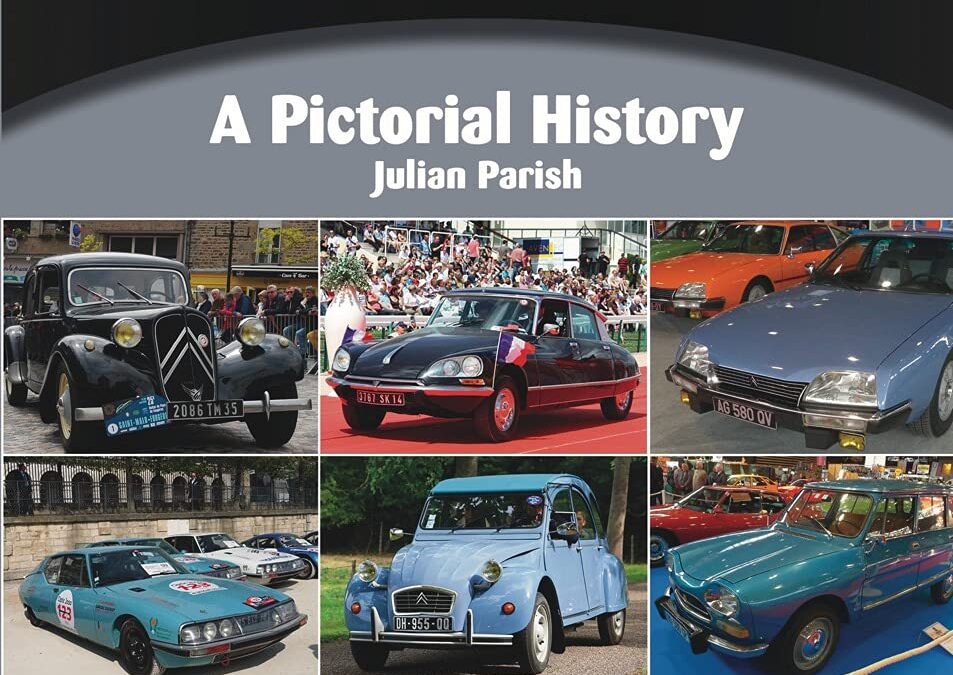
Of all the French car manufacturers, Citroën has the most enthusiastic following. During the half-century covered by this book, it produced the most technologically advanced cars of the time, including the Traction Avant, 2CV, DS and SM. This handy full-colour guide has individual chapters devoted to each of these models, together with the Ami, GS, CX, BX and the first models produced under Peugeot’s ownership. UK-built models and car-derived vans are included. Each chapter provides an introduction to the design and evolution of each model, as well as detailed technical information. Production numbers and dates are given, and there are details of special coachbuilt versions and limited editions. The guide is illustrated in full colour, with recent and archive photographs. Dashboard instrument layouts and gearchange patterns are also shown. Julian Parish is an experienced professional author and translator who has written on many makes of car, but his first car was a Citroën Dyane. He has lived in France for 25 years and has followed the marque at car shows and museums throughout the country.
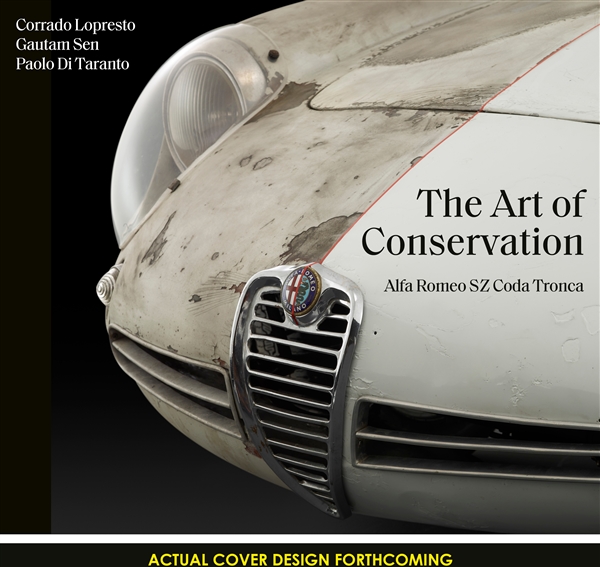
Pre-order now for early 2023 delivery
The story of rediscovering a very important historic vehicle and its conservation whereby the car has been treated as a work of art, saving as much as possible of the amazingly well preserved original. Drawing on art and archaeological techniques, prominent Italian collector Corrado Lopresto decided to clean only half the car, leaving the other half frozen in time. In the uncleaned half, Lopresto preserved everything (including the dust) under a thin layer of transparent matt lacquer. The cleaned part has not been restored either, but has been saved by retouching in such a way that the original aspects are not affected. This book “Alfa Romeo SZ Coda Tronca: The Art of Conservation” captures the rediscovery of this historic vehicle and the way it has been preserved – a fascinating tale of art meeting automobile. A very significant car in terms of aerodynamics and body design, this is the specific car on which the evolution from the Coda Tonda version of the Alfa Romeo Giulietta SZ to the Coda Tronca was executed
- Hidden for the best part of five decades, the car was rediscovered in the United States in a perfectly preserved state
- Acquired by the legendary Italian collector Corrado Lopresto, one half of the car has been conserved, and the other half has received light restoration to preserve the car in as original a state as possible, making it a unique experiment and example of conservation processes and concepts
- Not only did it win the Best Preserved Award at the Concorso Eleganza Villa d’Este in 2016, it also headlined the special exhibition of historic vehicles at UNESCO, Paris
- No doubt one of the most significant cases of a barn find, which has been preserved in the best possible way, thereby providing an example for the future
- Hard cover with dust jacket
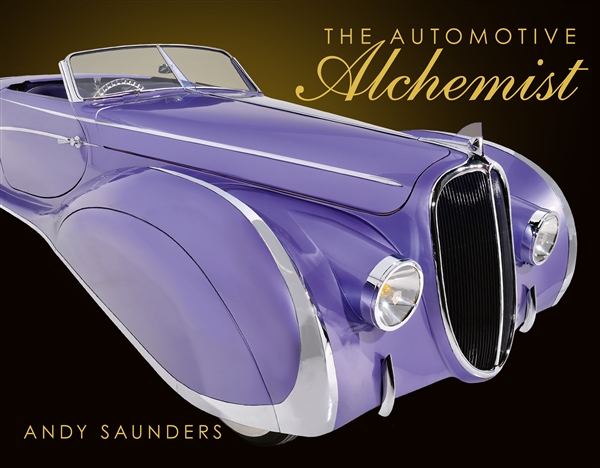
Andy Saunders’ ‘Automotive Alchemist ’ is a roller-coaster ride through the highs and lows of this charismatic man’s life. From the early years of learning the basic skills of cutting and shaping metal then painting and airbrushing, to his mature creations, restorations and the inherent genius of his designs. Andy welcomes us into his workshop and his head: not afraid to express his emotions, as he deconstructs and then rebuilds each vehicle, he lays bare his motivations, inspirations, influences, and passions. Intertwined in the narrative is the work involved in the creation of 60 cars, described here with many detailed photographs.
Forty-two of Andy’s creations now reside in museums and private collections across the globe but the most unusual fate is that of Flat Out, the Guinness Book of Records acclaimed Lowest Car in the World, which is now a coffee table in the foyer of a huge Californian corporation.
The book is not a technical ‘how to create wild custom cars’ manual. Rather it is a celebration of Andy’s joy of creation and his design genius, though tempered by personal traumas and losses. He has, on many occasions, been referred to as the British George Barris, the American “King of Kustomizers.” Unlike many biographies, this book engages the reader with its honesty and humour.
Andy Saunders grew up in Poole on the south coast of England and developed an early relationship with the building and customising of cars. His first project was finished before he was old enough to hold a British driving license.
Since that first project, his journey to become Britain’s leading and most recognisable ‘Car Artist’ has evolved. With his painstaking attention to detail and his knowledge of the styling masters from bygone eras, his creations have always been unique and, occasionally, controversial.
Never shy of turning his ideas into reality or taking unexpected opportunities to fruition, Andy has, on occasions, thrown away the accepted rule book and created some truly amazing vehicles: making a Citroën CX into a road-legal alien craft; turning Ford’s 1958 X-2000 ‘car of the future’ model into a full-sized reality and creating a Cord coupe that the factory would have been proud to call their own.
Andy has three Guinness Book of Records certifications: twice for the ‘lowest car in the world’ and once for the ‘lowest van in the world’ which remains unbeaten and has been approached by film companies and undertaken commissions for major car manufacturers. But mostly he builds whatever has inspired his creative juices from lowriders, Incantation, to shortened Minis, Mini Ha Ha; from restyling a Bentley Mulsanne, which was acclaimed by the Rolls-Royce and Bentley Owners Club as “the most beautiful coachbuilt Bentley to have been built since WWII”, to a 2CV inspired by Picasso – Picasso’s Citroën; and from his drivable version of Bertone’s Lancia Stratos Zero to his Art Deco creation of a rare 1939 Peugeot, Metropolis, inspired by Fritz Lang’s 1927 masterpiece of the same name.
During the past four decades Andy has restored Cord, Pontiac and Rolls Royce vehicles. Rescued and restored the unique and much-maligned 1957 Aurora Safety Sedan and realised an affinity with the great designer Alex Tremulis. Andy’s creations have appeared in exhibitions, on television and in magazines as far afield as Australia, Korea, America, the UK and Europe and many of his vehicles nowadays reside in museums and collections from California to Japan and from Europe to the Middle East.
And so to his latest masterpiece, Déjà: inspired by a 1930’s popular French girls name, some body panels he didn’t want or need and the pinnacle of French coachbuilding, Andy has created this Delahaye, a hand-built steel roadster. This beautiful cross between Joseph Figoni’s 165s and Jacques Saoutchik’s 175 somehow appears to be some eighty-five years late for her debut at the Paris Salon de l’Automobile.
- 464 pages
- Hard cover with dust jacket
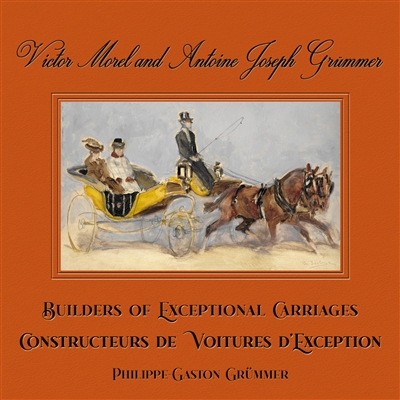
Maison V. Morel was founded in 1845 by Victor Jacques Morel (1814-1879) and became one of the most important Parisian coachbuilders during the second half of the 19th century at a time when France dominated the industry, replacing England as leaders in the field. Antoine-Joseph Grümmer (1834-1909) succeeded Jacques Morel in 1879 and the company became known as Société J. Grümmer, formerly Maison Morel.
This book introduces the reader to many previously unpublished documents and illustrations of exceptional carriages and cars that were the pride of their owners both in France and overseas and describes their importance in the day-to-day life of Parisian high society. Mention is also made of the many high-quality suppliers who contributed to the manufacture of the carriages including Hermès, Louis Vuitton, and Boyriven.
The book is written in both English and French.
-
- 378 images / 139 drawings
- Dual-language (English and French)
- 290mm x 219mm, landscape
- Hard cover
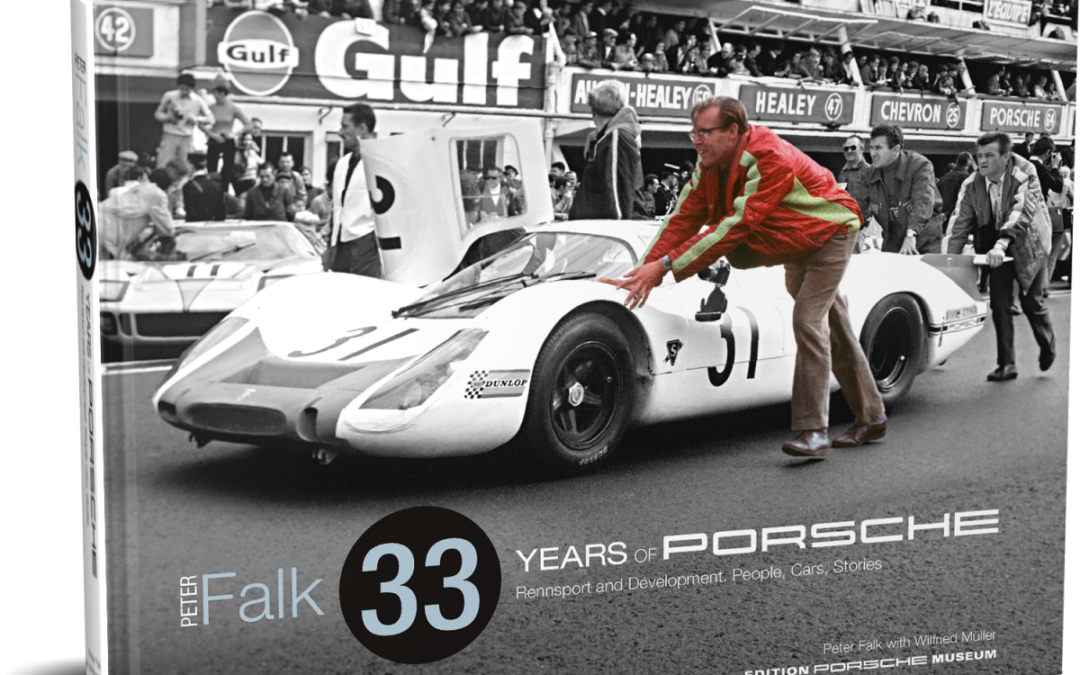
This edition of the book is limited to only 150 numbered copies, contains a hand signature of Peter Falk and comes in a luxury linen slip case.
Peter Falk and Porsche, 33 years of passion and devotion: As their race director and one of the leading figures in their experimental department, Peter Falk contributed significantly to the character of the sports cars from Stuttgart-Zuffenhausen – both on the race track and on the road.
From the first 901 right through to the very last air-cooled Type 993, every Porsche 911 bears the signature of Peter Falk. He joined the company in 1959 and quickly rose through the ranks to head various testing departments. In the mid-sixties, Falk also took over the tactical and technical leadership of the factory’s “Rennsport” team. In 1981, he was appointed as race director and led Porsche throughout its most successful era of competition. “His” team won at Le Mans, became World Sports Car Champions, conquered the Paris-Dakar Rally, and was victorious in Formula 1 with the TAG Turbo engine.
In this book, Peter Falk tells of his years with Porsche. A highly respected person in the world of engineering, he relates how it all began at Porsche – when race drivers and engineers huddled together in a shepherd’s hut at Weissach to discuss suspensions, what the Porsche crew experienced during endless testing adventures in both the Arctic Circle and the Sahara, how the race cars at Le Mans roared to the start over country roads, and how a test drive with a Porsche 908 almost cost him his life. He shares his views on every Porsche race car, from the 904 Carrera GTS to the 962C, and describes the race drivers who competed during his reign: Hans Herrmann, Jacky Ickx, Vic Elford, Derek Bell, Hans-Joachim Stuck and Jochen Mass to name just a few. Falk provides a good, long look into the inner workings of Porsche.
Peter Falk shared his personal Porsche stories and fascinating insights with the author Wilfried Müller. The images in this book come from Peter Falk’s private collection, from the Porsche Historical Archive in Stuttgart-Zuffenhausen, and from the vast cache at McKlein Photography. Along with the contributions from former colleagues and race drivers, these images and stories give an in-depth portrayal of Peter Falk’s 33 years with Porsche.
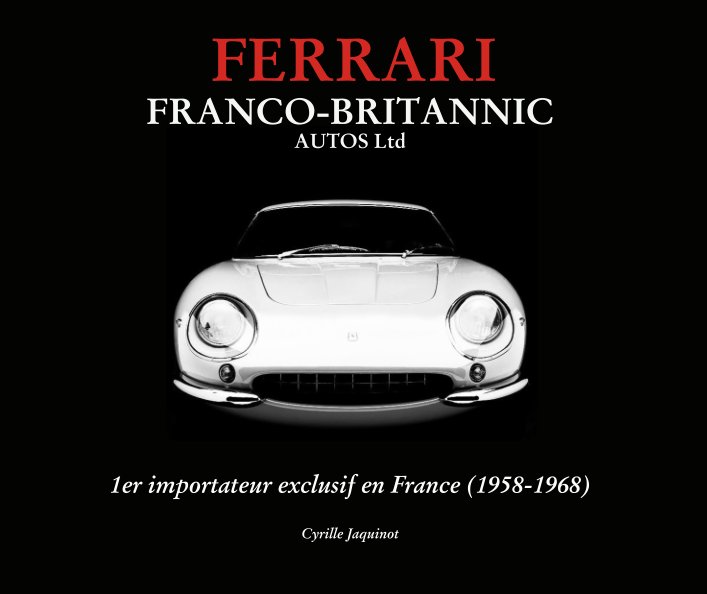
This book on a theme never before addressed is a tribute to the Sleator family, Franco-British family, as well as to all employees, partners, friends and customers of the Franco-Britannic Autos Ltd who, during these 10 years of the import, have promoted the extraordinary image of Ferrari in France…
Certainly the most beautiful Ferrari period in France !
The Franco-Britannic Autos Ltd, thanks to Walter and his son Donald Sleator, imported the most beautiful cars in the world on French soil from 1933 to 1989 for their most demanding customers.
Exclusive importer since 1933 in Paris of the two prestigious British brands Rolls-Royce and Bentley, then importer Rover (and Land Rover), Franco-Britannic Autos Ltd from the autumn of 1958 becomes the first exclusive Ferrari importer in France.
The Franco-Britannic Autos Ltd has experienced this new generation of buyers, the “Nouvelle Vague” as sung in one of his songs a certain Richard Anthony, young film actors, writers, and other artists, businessmen, industrialists … all needed and wanted to stand out by associating their image with that of exceptional automobiles and more particularly Ferrari.
Celebrities such as Jean-Paul Belmondo, Yves Montand, Lino Ventura, Françoise Sagan, Roger Vadim, Mylène Demongeot, Johnny Hallyday, Alain Delon, Claude Francois and many other stars were at one time clients of the Franco-Britannic Autos Ltd. The art of owning a road Ferrari, a very dynamic image, is considered a symbol of professional and social success.
The first Ferrari commercials in France by the FBA Ltd, our French stars of the “Yé-Yé” era, all the Paris Motor Shows, All Ferraris destined for the Marshall during the 24 Hours of Le Mans, piloted by Donald Sleator, then an official pilot until 1967.
There will also be a great tribute to Pierre Noblet with unpublished documents, Sylvain Garant…
Preface and anecdotes of Donald Sleator.
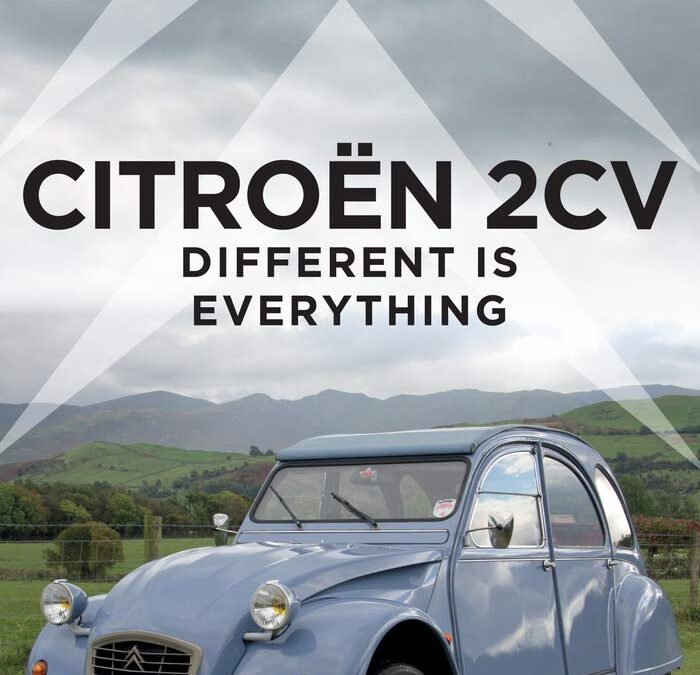
In this readable and informative book, motoring expert Malcolm Bobbit tells the story of one of the most iconic cars in motoring history. Designed as affordable and practical transport for French farmers traveling on either bad roads or plowed fields, it also found its way into the fashionable quarters of Paris. The book shows how designers successfully achieved the specification for rugged and utilitarian design suitable for times of austerity while at the same time producing a truly classless car. The author explains the history of the car, conceived when Citroen was owned by the Michelin tire company, and how the idea evolved. He covers the ingenious design aspects of the car, including the corrugated metal bonnet, hammock seats, push-pull gear lever, and twin-cylinder air-cooled engine. Such was the success of the 2CV that it spawned variants such as the Dyane, Ami 6 and Ami 8, and the British-built Bijou, all of which are covered in the book. Illustrated with a unique collection of high-quality photographs and written by an authority on Citroen cars, this concise book tells you all you need to know about the famous 2CV.

Design and the Bristol Car contains a description of the evolution of draughting techniques from the shipbuilding days, through aviation design and car design into the CAD-era, interspersed with the life story of Dudley Hobbs, chief designer at Bristol Cars from 1946 to 1976.
The second part of the book contains: Fascinating reports from the Bristol Aeroplane Company visits (by Dudley Hobbs) to Geneva, Lugano and Milan, the Paris and Geneva Motorshows and Carrozzeria Touring / A critical appraisal of the work of Dudley Hobbs by a current car designer / The pre-war history of the BMW 326, 327 and 328, which might be described as the first Bristols.
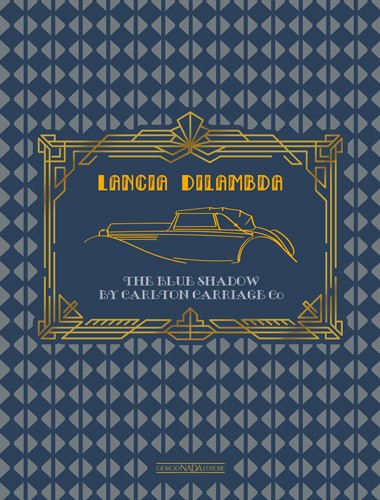
Following the Lambda of 1922, a car at the forefront of the world of automotive design holding a number of world patents, the Dilambda was presented at the Paris Motor Show in 1929, a car of absolute excellence in the best tradition of Italian design. There were three series of cars from the best coachbuilders of the time. Among these the English firm Carlton Carriage Company created the car which is the subject of this monograph, BS, Blue Shadow of 1930. The volume traces the history of this specific model and above all the meticulous restoration that brought it back to the ancient splendor.
A beautiful book dedicated to a car of great charm and history.



